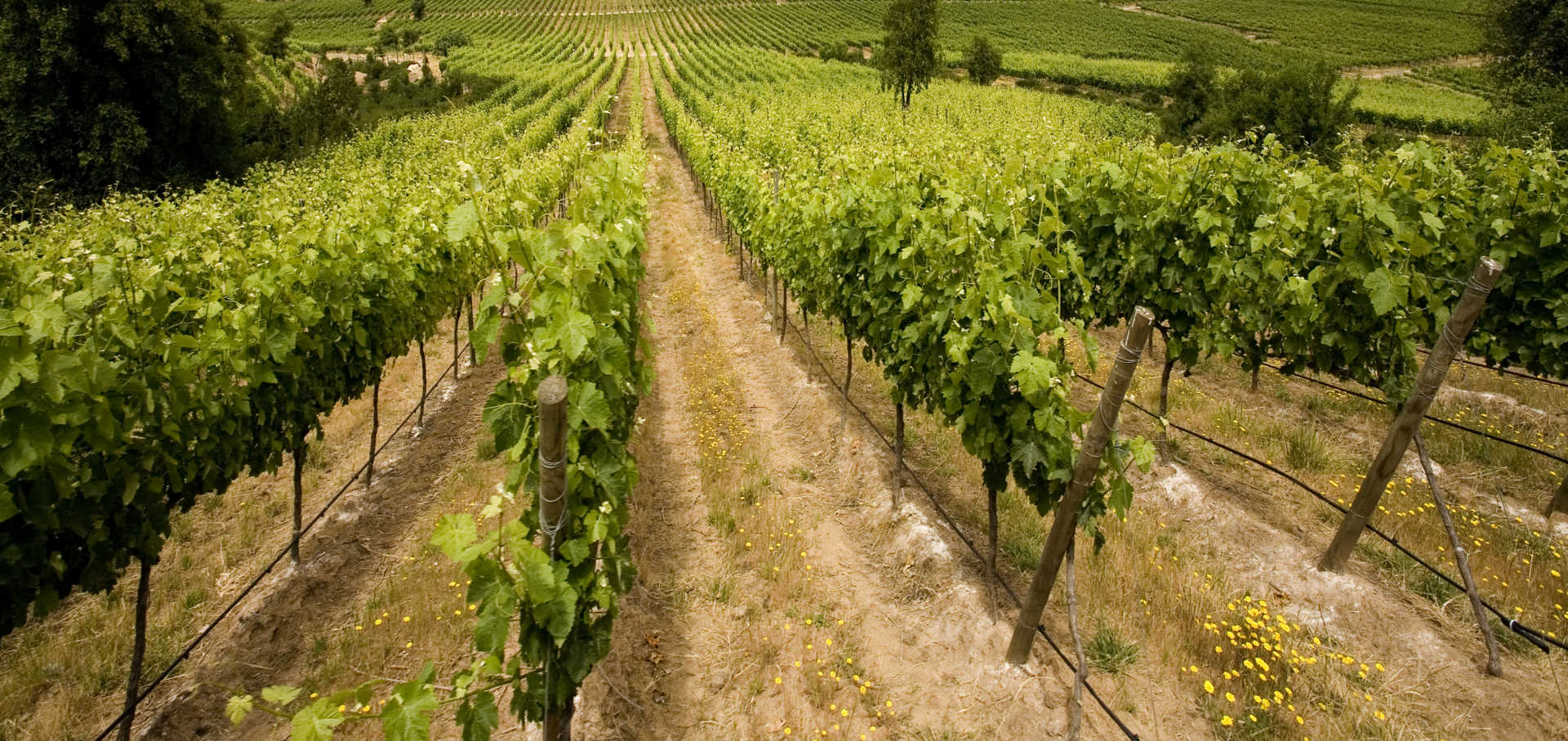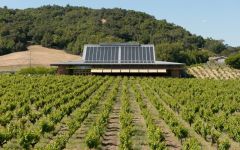Ridge Estate Cabernet Sauvignon (1.5 Liter Magnum) 2016
-
Jeb
Dunnuck - Decanter
-
Wilfred
Wong -
Tasting
Panel -
Wine
Spectator -
Wine &
Spirits



Product Details
Your Rating
Somm Note
Winemaker Notes
Blend:77% Cabernet Sauvignon, 19% Merlot, 2% Petit Verdot, 2% Cabernet Franc
Professional Ratings
-
Jeb Dunnuck
The 2016 Cabernet Sauvignon Estate comes from the Santa Cruz Mountain estate, and it follows its big brother Monte Bello's style with a terrific sense of elegance paired with richness. Lots of crème de cassis, crushed violets, vanilla, tobacco leaf, and cedar notes flow to a medium to full-bodied, beautifully concentrated, layered Cabernet Sauvignon that has terrific purity, building tannin, and a great finish. It offers pleasure today yet won't hit prime time for another 5-7 years, and it's going to evolve for 15-20 years (probably longer).
-
Decanter
Elegant oaky blackcurrant nose, with appealing purity of fruit. Delicate and understated, but nonetheless concentrated and strcutured, with firm underlying tannins. Very long. Drinking Window 2020 - 2040
-
Wilfred Wong of Wine.com
COMMENTARY: Launched in 2008 the Ridge Estate Cabernet Sauvignon is made from parcels resulting in earlier maturing wines. The beautifully refined 2016 vintage shows the beautiful breed of the Monte Bello Vineyard. TASTING NOTES: This wine, showing well upon release, displays an excellent depth of fruit and range of nuances. Its aromas and flavors of exotic black fruit, dried spices, and earth should pair it well with grilled lamb chops accented with fresh mint leaves. (Tasted: February 27, 2019, San Francisco, CA)
-
Tasting Panel
Deep ruby color with a rich plum nose; tangy, smooth, and intense with a velvety texture and chewy, toasty style. The addition of three other Bordeaux varieties give it depth.
-
Wine Spectator
Reveals a singed cedar frame around a core of gently steeped plum and blackberry fruit, with notes of violet, bay leaf and charcoal filling in on the finish. Structured and toothy now, but should round into form soon enough, as the fruit is very vibrant. Best from 2021 through 2030
-
Wine & Spirits
Ridge collectors may remember the Jimsomare cabernets that Paul Draper made until 1997. They came from a property on Monte Bello Road that Pierre Klein had originally planted to cabernet in the late 19th century, and was replanted in the 1970s. When Ridge signed a long-term lease on the vineyard in 1996, the fruit became part of the Monte Bello blend. The 2016 is the first separate bottling from the site in two decades. The site is lower in elevation than others in the Monte Bello collection, with wider shifts between day and nighttime temperatures, generating a redfruited cabernet with an oceanic freshness and an acidity that feels pithy. It’s tight and reductive (a little youthfully stinky), needing five years or more to begin to show its best.
Other Vintages
2020-
Wilfred
Wong -
Jeb
Dunnuck
-
Jeb
Dunnuck -
Robert
Parker - Vinous
-
James
Suckling - Vinous
-
Wilfred
Wong -
Wine &
Spirits
-
Tasting
Panel -
Robert
Parker -
Jeb
Dunnuck -
Wine &
Spirits
-
Jeb
Dunnuck -
Robert
Parker -
Wine &
Spirits
-
Jeb
Dunnuck -
Wine
Spectator - Decanter
-
Wine &
Spirits
- Decanter
-
Wine &
Spirits
-
Wine
Enthusiast
-
Robert
Parker -
James
Suckling -
Wine
Enthusiast







Ridge's history begins in 1885, when Osea Perrone, a doctor and prominent member of San Francisco's Italian community, bought 180 acres near the top of Monte Bello Ridge in the Santa Cruz Mountains. He planted vineyards and constructed a winery of redwood and native limestone in time to produce the first vintage of Monte Bello in 1892. The historic building now serves as the Ridge production facility.
Though Ridge began as a Cabernet winery, by the mid-60s, it had produced several Zinfandels including the Geyserville. In 1972, Lytton Springs joined the line-up and the two came to represent an important part of Ridge production. Known primarily for its red wines, Ridge has also made limited amounts of Chardonnay since 1962.
The Ridge approach is straightforward: find the most intense and flavorful grapes, guide the natural process, draw all the fruit's richness into the wine. Decisions on when to pick, when to press, when to rack, what varietals and what parcels to include and when to bottle, are based on taste. To retain the nuances that increase complexity, Ridge winemakers handle the grapes and wine as gently as possible. There are no recipes, only attention and sensitivity.

A noble variety bestowed with both power and concentration, Cabernet Sauvignon enjoys success all over the globe, its best examples showing potential to age beautifully for decades. Cabernet Sauvignon flourishes in Bordeaux's Medoc where it is often blended with Merlot and smaller amounts of some combination of Cabernet Franc, Malbecand Petit Verdot. In the Napa Valley, ‘Cab’ is responsible for some of the world’s most prestigious, age-worthy and sought-after “cult” wines. Somm Secret—DNA profiling in 1997 revealed that Cabernet Sauvignon was born from a spontaneous crossing of Cabernet Franc and Sauvignon Blanc in 17th century southwest France.

A rugged and topographically diverse cool-climate appellation with a rich history, the Santa Cruz Mountains AVA stretches from Half Moon Bay, just south of San Francisco, to the northern border of Monterey County. Elevations range from 800 feet to upwards of 3,000 and microclimates vary substantially depending on which side of the mountains the vineyards lie; cool ocean winds and fog play an important role here. This can be a challenging region in which to grow grapes, but it is well worth the effort. Santa Cruz Mountains wines are noted for balanced acidity levels, often showing great aging potential. Wine has been made here since the 1800s, most notably from the legendary Ridge Vineyards, whose Monte Bello vineyard garners international admiration.
Pinot Noir, Chardonnay and Cabernet Sauvignon are the stars of this region, while Merlot and Zinfandel also perform quite well. Organic and sustainable vineyard practices are becoming increasingly common.
